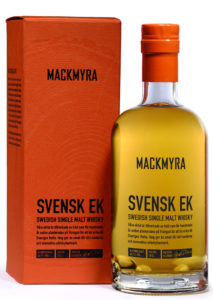By Richard Thomas
Bourbon is undoubtedly booming, but it’s malted barley that stands as the dominant basis for world whisk(e)y. Leaving aside all those pricey Scottish single malts that inspire such devotion from global whisky fans, two other major whisky countries—Ireland and Japan—are also surging and just as barley-based. Malts are now widely touted as the “next big thing” in the United States as well, but much more important is the way that the Scottish malt model serves as the basis for the international craft whiskey movement.
Here are five standout examples you may or may not have heard of, but should become better acquainted with. All are pioneers of whisky-making in their countries, and all are producing some very drinkable whisky:
Amrut (India): Launched in 2004, but coming out of a much older distillery, Amrut was the first single malt to come from India. Although that country is sometimes described as the world’s largest whisky market by volume, the overwhelming majority of that volume is made up of ersatz whiskies made by blending some (often imported) malt with a locally made spirit similar to rum. Amrut, on the other hand, is a whisky the rest of the world recognizes as such.
Amrut is an excellent example of what a starkly different climate can do to a whisky-making model. The fierce heat in Bangalore accelerates certain aspects of maturation, while at the same time raising evaporation loss to 10 to 12% annually (as opposed to roughly 2% in Scotland). This is similar to the experience of bourbon-makers in Texas, but Bangalore’s environs aren’t as humid as the Lone Star State, increasing the proportion of water to alcohol vapor in the loss.
By tweaking their production process to fit their circumstances, Amrut has turned out a series of single malts that have begun turning heads. Certainly few scoff that you can’t make a good malt whisky in India anymore.
Hellyers Road (Australia): After Sullivans Cove French Oak Cask Single Malt was voted “World’s Best Single Malt Whisky” at the 2014 World Whisky Awards, people started paying closer attention to Australian whisky, Tasmanian whisky in particular. Despite this, distilleries like Hellyers Road sometimes go overlooked, which is amazing when you consider that Hellyers in particular has been around long enough to produce lovely single malts with 10 and 12 year age statements attached.
La Alazana (Argentina): After starting production in 2011 as Argentina’s first malt whisky distillery, and then making an initial release in 2014, Patagonia’s La Alanza Distillery finally got some of its single malt out before an international audience last year. Their No Age Statement (NAS) whisky was based on 80% bourbon barrel and 20% sherry cask stock.
Mackmyra (Sweden): Founded as Sweden’s first whisky distillery in 1999, Mackmyra experimented for three years before building their production distillery in 2002 and beginning operations, producing peated and an unpeated spirits. Their first release came in 2006.
Mackmyra draws heavily on local resources, with even their peat coming from Sweden. Part of their signature is using a local oak species to produce barrels, which produces herbal and juniper notes, in combination with the more usual ex-bourbon and -sherry casks. To adapt to the Scandanavian/Baltic climate, Mackmyra also relies heavily on quarter casks. The company has enjoyed enough success that they expanded and added a second distillery in 2011, partly replacing the old plant, with the new facility having between two and three times the production capacity of the original.
Puni (Italy): In keeping with a prevalent theme, Puni Distillery is Italy’s first whisky-maker, founded in 2010. The distillery, located in the Italian Alps and using copper pots built by Rothes, went online in 2012. They released their first whiskies in 2015, after the minimum three years of maturation. Although youthful, Puni’s single malts often show good personality through a thoughtful use of some interesting cask choices, such as Marsala wine.
 The Whiskey Reviewer A World of Whiskey, Poured Every Weekday
The Whiskey Reviewer A World of Whiskey, Poured Every Weekday



